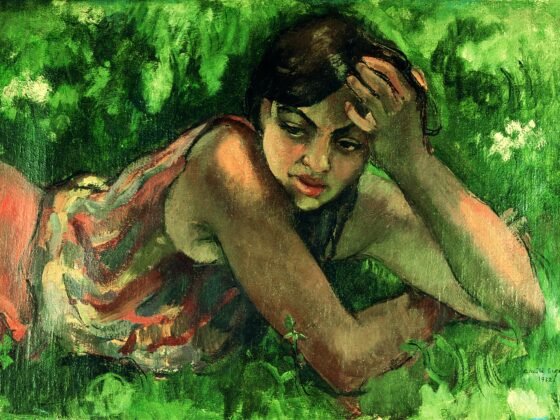“Humankind must learn to understand that the life of an animal is in no way less precious than our own.” ― Paul Oxton
Day by day, we hear news of animal species becoming rarer and slowly turning Extinct Animals. According to the wildlife survey organizations, four species of animals have vanished from the Indian wildlife habitat over the recent years. The Ministry of Environment, Forest, and Climate Change has tabled down the data relating to these extinct species.
Climate change is the biggest cause for local extinctions of animal species in India, and the impact influences interactions between species by reducing the prey populations for predators. Thus, preserving wildlife is highly significant in animal rights and wildlife conservation. Furthermore, in the end, universal compassion is the only guarantee of morality.
List of Extinct Animals, extinct in the wild, and critically endangered
India has about 6.49% of all the fauna species in the world. Competition, predation, and natural selection are factors beyond human control that lead to species extinction in their natural habitat. Moreover, factors that humans can control include hunting and habitat degradation through the climate change crisis.
The cheetah ( Acinonyx jubatus )

It is considered extinct in India. Extinction means that we can no longer find any traces of wild cheetahs in the Indian forests anymore. No amount of effort can bring back these cheetahs from the time they had roamed in pride and honor through their natural and uncontaminated habitats. Human beings must realize that extinction is the last stage of existence of any animal species, and it is a red alert to start saving them before they are lost forever.
The Sumatran rhinoceros ( Dicerorhinus sumatrensisi)

This variant of rhinoceros is also considered extinct in India. Finding any traces of such wild creatures is nearly impossible since they have vanished from our forests and wildlife habitats. Since the time human beings have started cutting down trees and disturbing the ecosystem of its natural balance, more and more animal species are moving towards extinction.
The pink-headed duck ( Rhodonessa Caryophyllaceae )

In India, the pink-headed bird has been believed to be extinct since the year 1950. The traces of this wonderful, magnificent bird cannot be found anymore. India has seen the loss of some of the most beautiful species of birds on the planet. It is high time to bring our minds and our hearts to the right place and work towards protecting innocent wild creatures who have considered Earth as their home forever.
The Himalayan quail (Ophrysia supercilious)

It was last reported to have existed around the year 1876 in India. Ever since then, no traces of the bird have been found in the wild forests and open skies of the Himalayan region of India. It is truly a loss that can shatter the hearts of India’sIndia’s compassionate nature loving people. Now is the time to save and protect our birds and animals from the cruelty and barbarity of modern-day factories and human activities that destroy the natural habitat of these precious innocent living creatures.
Kashmiri Red Stag

Among the high preservation needs recorded by the Indian government, the Kashmiri Red Stag is a jeopardized animal type. Their number has diminished from 5,000 in 1990 to more than 110 in 2015.
Lion-tailed Macaque

It is tracked down in the thick terrains of Western Ghats and is, for the most part, tracked down in the upper shelters of the rainforest. Assessed to be around 4,000, the species is in danger because of elements like hunting, nat
Bengal Tiger

Its populace has plunged, with under 2,000 left; the human-natural life struggle most impacts the Bengal Tigers. The wilderness feline is a casualty of poaching, prize chases, and territory misfortune. Outrageous climate attached to environmental change is additionally adversely influencing the tigers, denying them territory and hurting their wellsprings of food. Another serious issue is continuous deforestation and asset abuse that affects the tiger’s natural surroundings.
Public participation in wildlife conservation in India
Better impetus on people’speople’s participation in conservation will significantly enhance awareness of animal rights. In other words, people-based conservation initiatives in India will substantially increase the rate of conservation initiatives in the country. There is a pressing need to address the human-wildlife conflict, and Inclusivity must be the main objective of the governmental projects.
They must involve local communities living in the eco-sensitive zones or protected areas. These local communities must be given additional economic incentives to help further the cause of wildlife preservation in India. Furthermore, various environmental organizations in India must develop harmonious coexistence by ensuring that both the human and wildlife species are protected from conflicts and tension.
Conclusion
Conservation of wildlife is paramount in the context of India. In India, a bigger or larger animal such as an elephant or a Tiger is given adequate significance for its preservation efforts. Indians take good care of elephants and other large animals that we can see more commonly in India, such as a cow. But, the preservation of smaller species of animals, including many bird species that are slowly vanishing because of the change in climate and progression of the life cycle on Earth, is significant in the present time.
The focus of the Wildlife Crime Control Bureau and the Ministry of Environment, Forest, and Climate Change must be on protecting endangered and critically endangered species. It is a red alert sign to protect our animal kingdom before they all vanish from the Earth, leaving us with a shattered life cycle or food chain cycle and a lack of earthly compassion for our mother earth and its wild creatures.

 Add to favorites
Add to favorites








